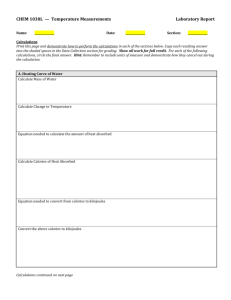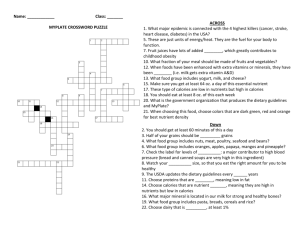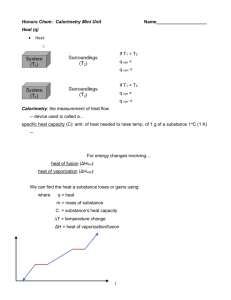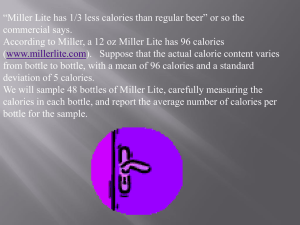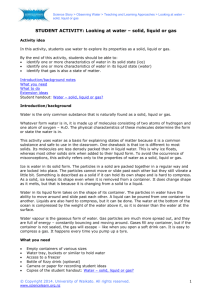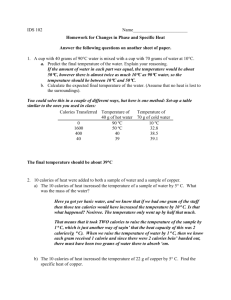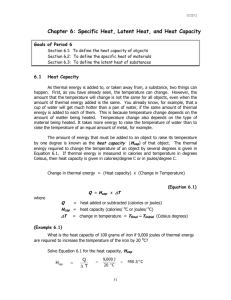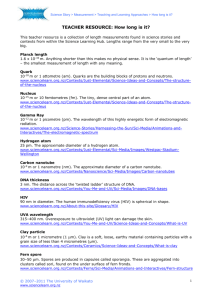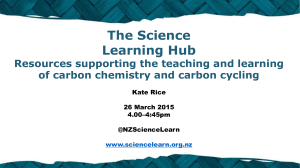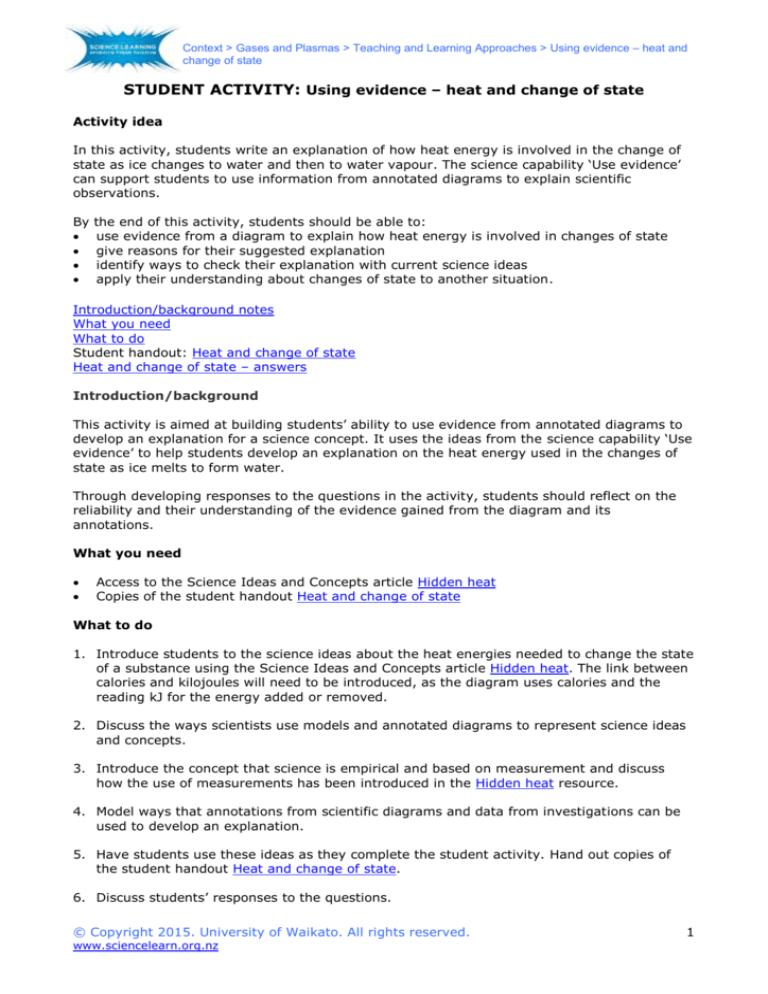
Context > Gases and Plasmas > Teaching and Learning Approaches > Using evidence – heat and
change of state
STUDENT ACTIVITY: Using evidence – heat and change of state
Activity idea
In this activity, students write an explanation of how heat energy is involved in the change of
state as ice changes to water and then to water vapour. The science capability ‘Use evidence’
can support students to use information from annotated diagrams to explain scientific
observations.
By
the end of this activity, students should be able to:
use evidence from a diagram to explain how heat energy is involved in changes of state
give reasons for their suggested explanation
identify ways to check their explanation with current science ideas
apply their understanding about changes of state to another situation.
Introduction/background notes
What you need
What to do
Student handout: Heat and change of state
Heat and change of state – answers
Introduction/background
This activity is aimed at building students’ ability to use evidence from annotated diagrams to
develop an explanation for a science concept. It uses the ideas from the science capability ‘Use
evidence’ to help students develop an explanation on the heat energy used in the changes of
state as ice melts to form water.
Through developing responses to the questions in the activity, students should reflect on the
reliability and their understanding of the evidence gained from the diagram and its
annotations.
What you need
Access to the Science Ideas and Concepts article Hidden heat
Copies of the student handout Heat and change of state
What to do
1. Introduce students to the science ideas about the heat energies needed to change the state
of a substance using the Science Ideas and Concepts article Hidden heat. The link between
calories and kilojoules will need to be introduced, as the diagram uses calories and the
reading kJ for the energy added or removed.
2. Discuss the ways scientists use models and annotated diagrams to represent science ideas
and concepts.
3. Introduce the concept that science is empirical and based on measurement and discuss
how the use of measurements has been introduced in the Hidden heat resource.
4. Model ways that annotations from scientific diagrams and data from investigations can be
used to develop an explanation.
5. Have students use these ideas as they complete the student activity. Hand out copies of
the student handout Heat and change of state.
6. Discuss students’ responses to the questions.
© Copyright 2015. University of Waikato. All rights reserved.
www.sciencelearn.org.nz
1
Context > Gases and Plasmas > Teaching and Learning Approaches > Using evidence – heat and
change of state
Student handout: Heat and change of state
This diagram shows the heat energies needed to convert 1 gram of ice at 0°C to its liquid and
gaseous states. The unit of energy used is the calorie, which is defined as being the amount of
heat energy needed to raise the temperature of 1g of water by 1°C.
1. Look at the diagram and the captions. Explain how you think heat energy is involved in
changes of state.
2. What makes you think this?
3. How could you check your idea?
4. Which other substances undergo changes of state in the same way?
5. Describe a substance in which these changes of state wouldn’t occur.
© Copyright 2015. University of Waikato. All rights reserved.
www.sciencelearn.org.nz
2
Context > Gases and Plasmas > Teaching and Learning Approaches > Using evidence – heat and
change of state
Heat and change of state – answers
1. Look at the diagram and captions. Explain how you think heat energy is involved in
changes of state.
When 80 calories of heat energy is added to 1 g of ice that is at 0oC, it will cause the ice to
melt, changing from a solid to a liquid.
If 100 calories of heat energy is then added to the 1 g of water, it will result in the water
boiling at 100oC.
If a further 540 calories of heat energy is added, the 1 g of boiling water will evaporate,
resulting in water vapour, which is a gas. Carrying out the reverse process where the same
number of calories of heat energy are removed rather than added will lead to the water
vapour condensing to form liquid water. With a further loss of 100 calories of heat energy
as the water cools and then removal of an additional 80 calories, freezing will occur and
solid ice will be formed.
(Note that this explanation does not use all the terms, such as latent heat of fusion and
vaporisation.)
2. What makes you think this?
Reading the information annotating the diagram as well as the caption provides these
terms and statements. Have also learned that heat energy is needed to change solids to
liquids and then gases.
3. How could you check your idea?
Refer to a science text or online information about change of state.
4. Which other substances undergo changes of state in the same way?
Metals such as tin and lead, candle wax.
5. Describe a substance in which these changes of state wouldn’t occur.
Not a mixture like milk. It freezes due to the water in it, but only the water from it will
evaporate to form a gas. You are left with milk solids.
© Copyright 2015. University of Waikato. All rights reserved.
www.sciencelearn.org.nz
3

